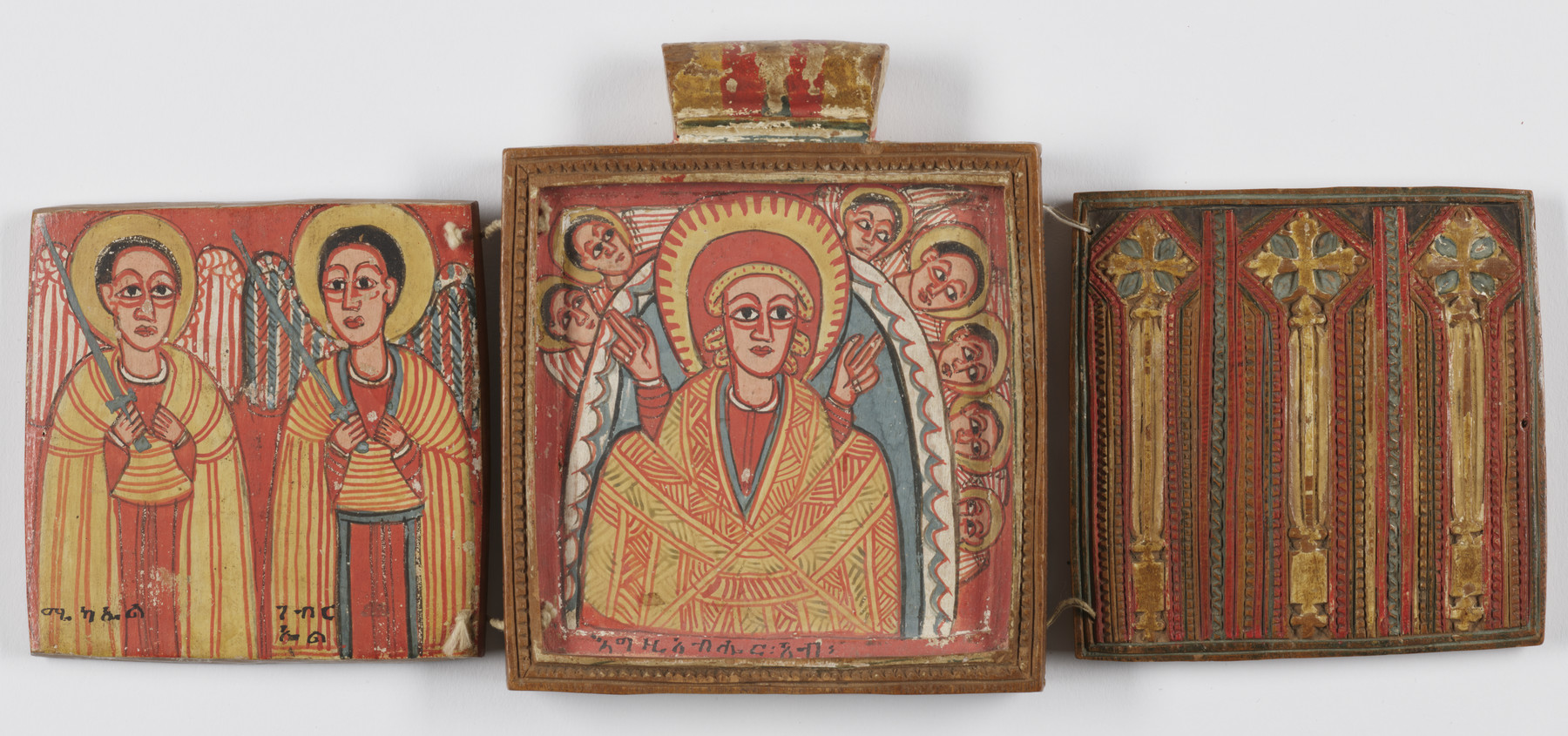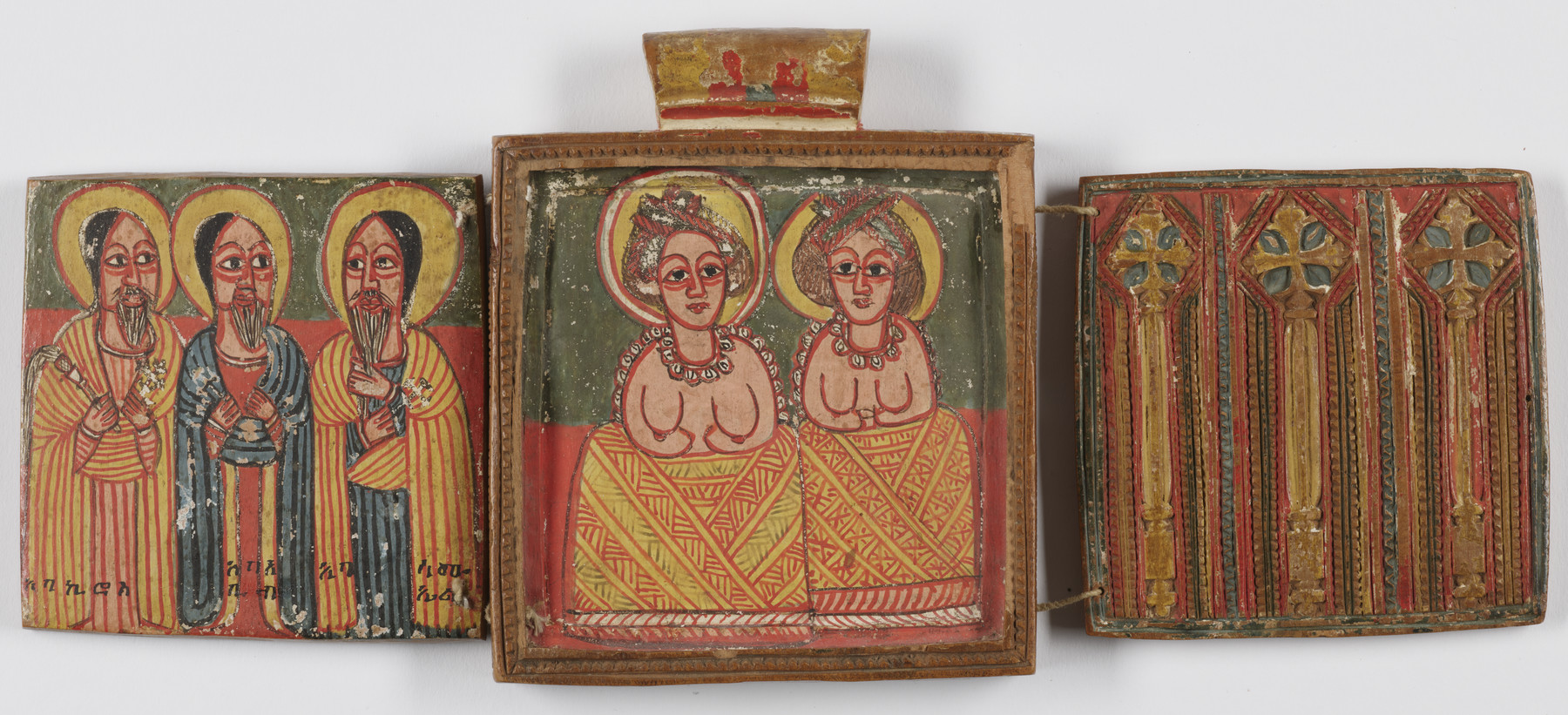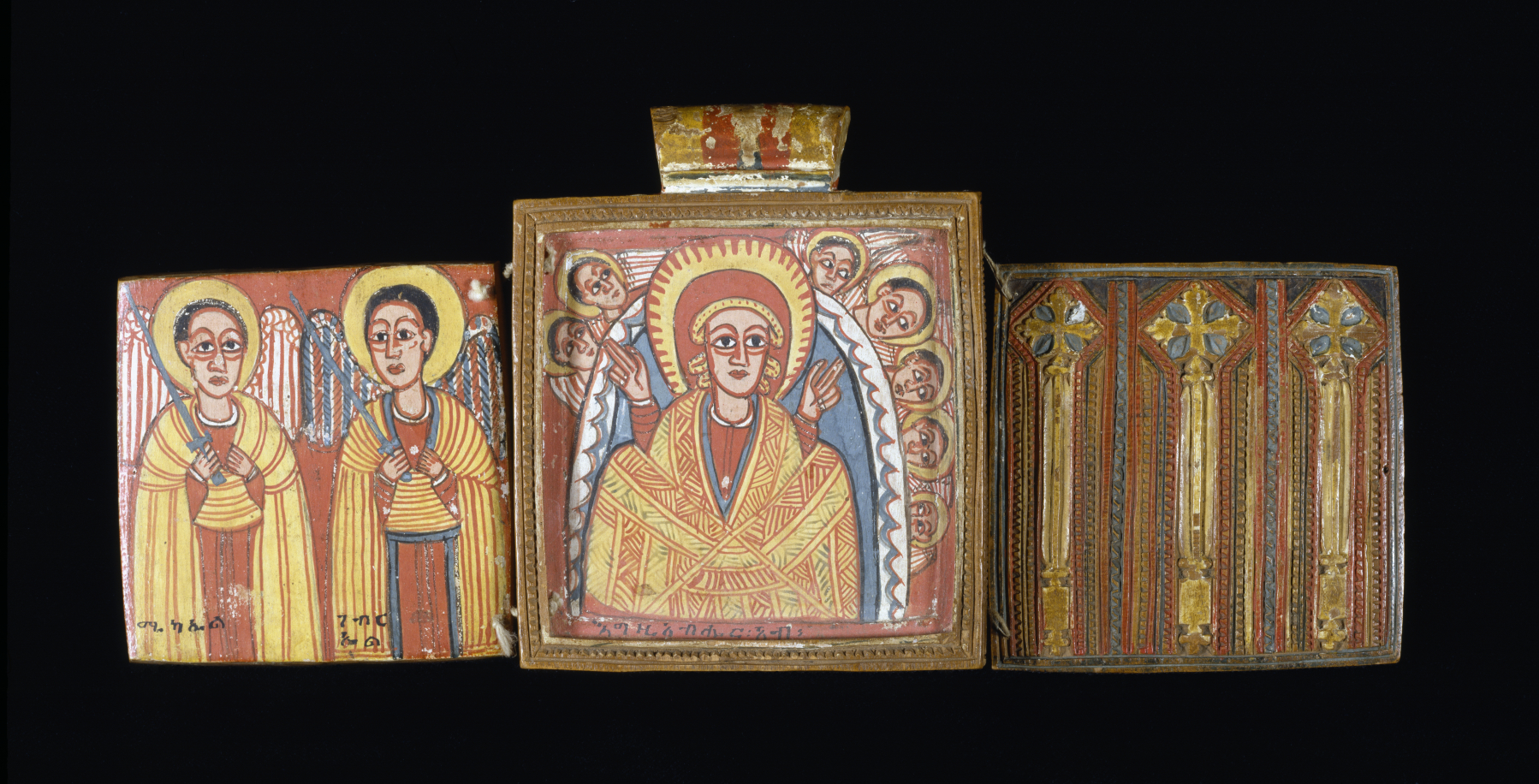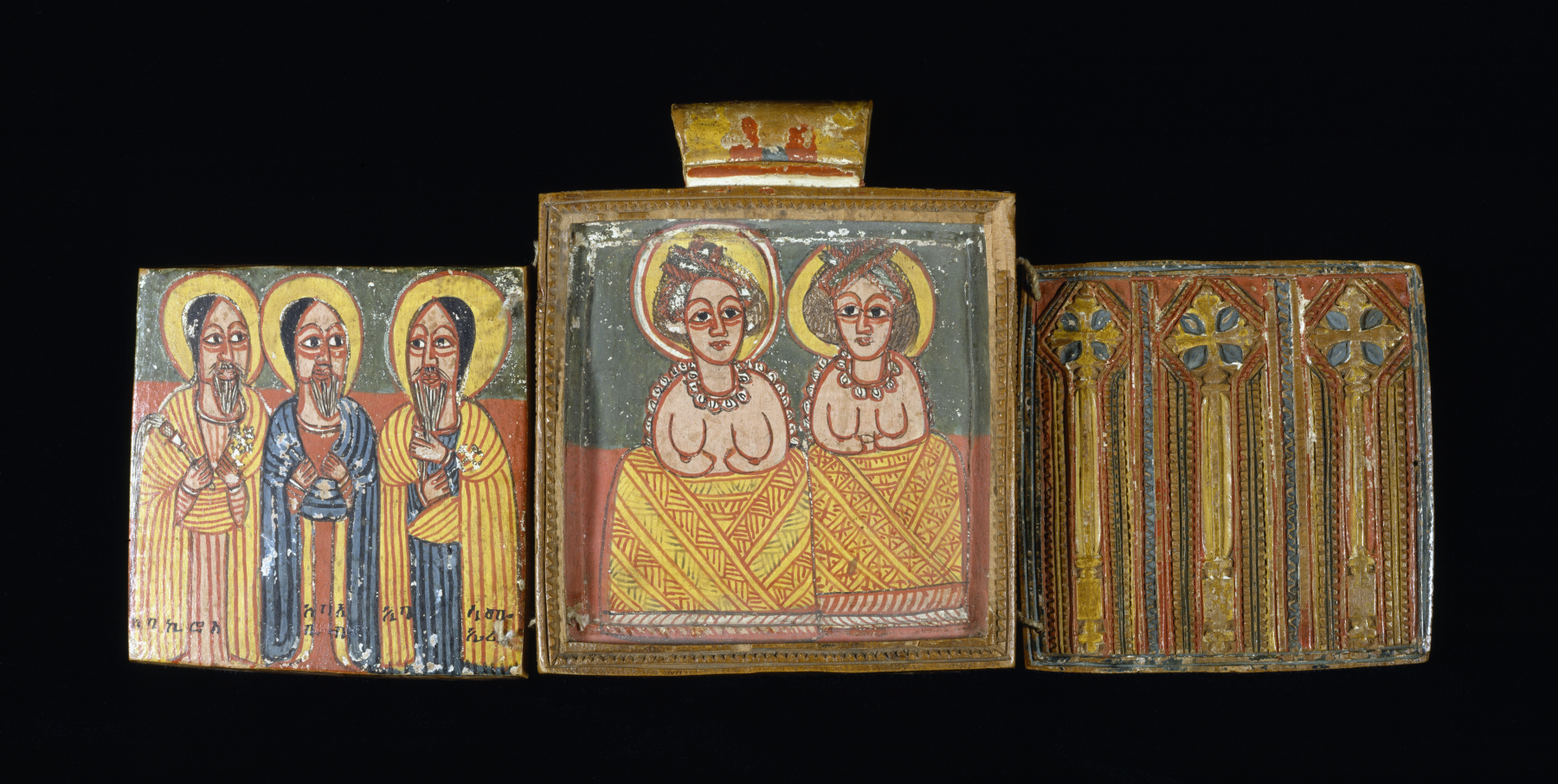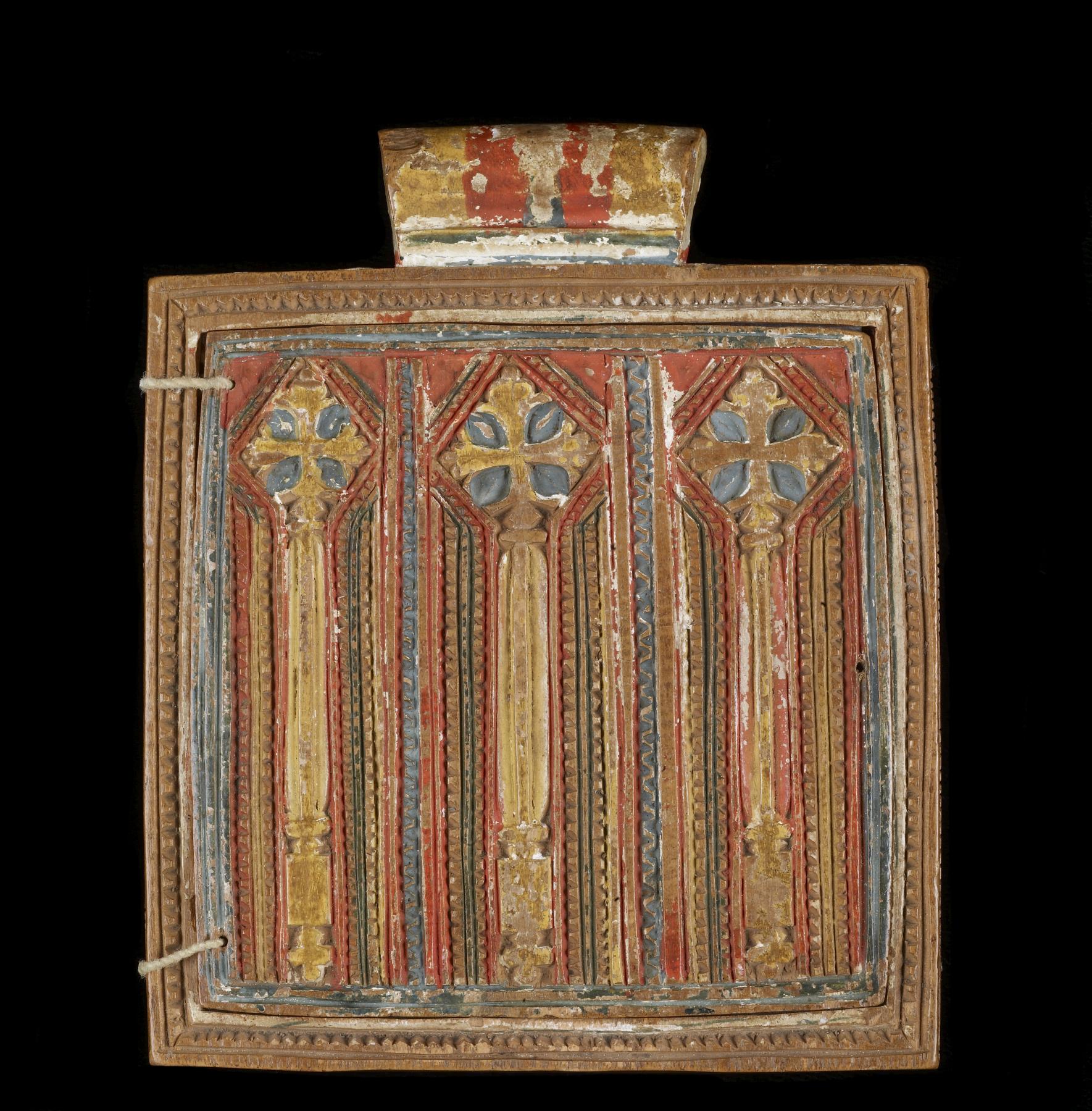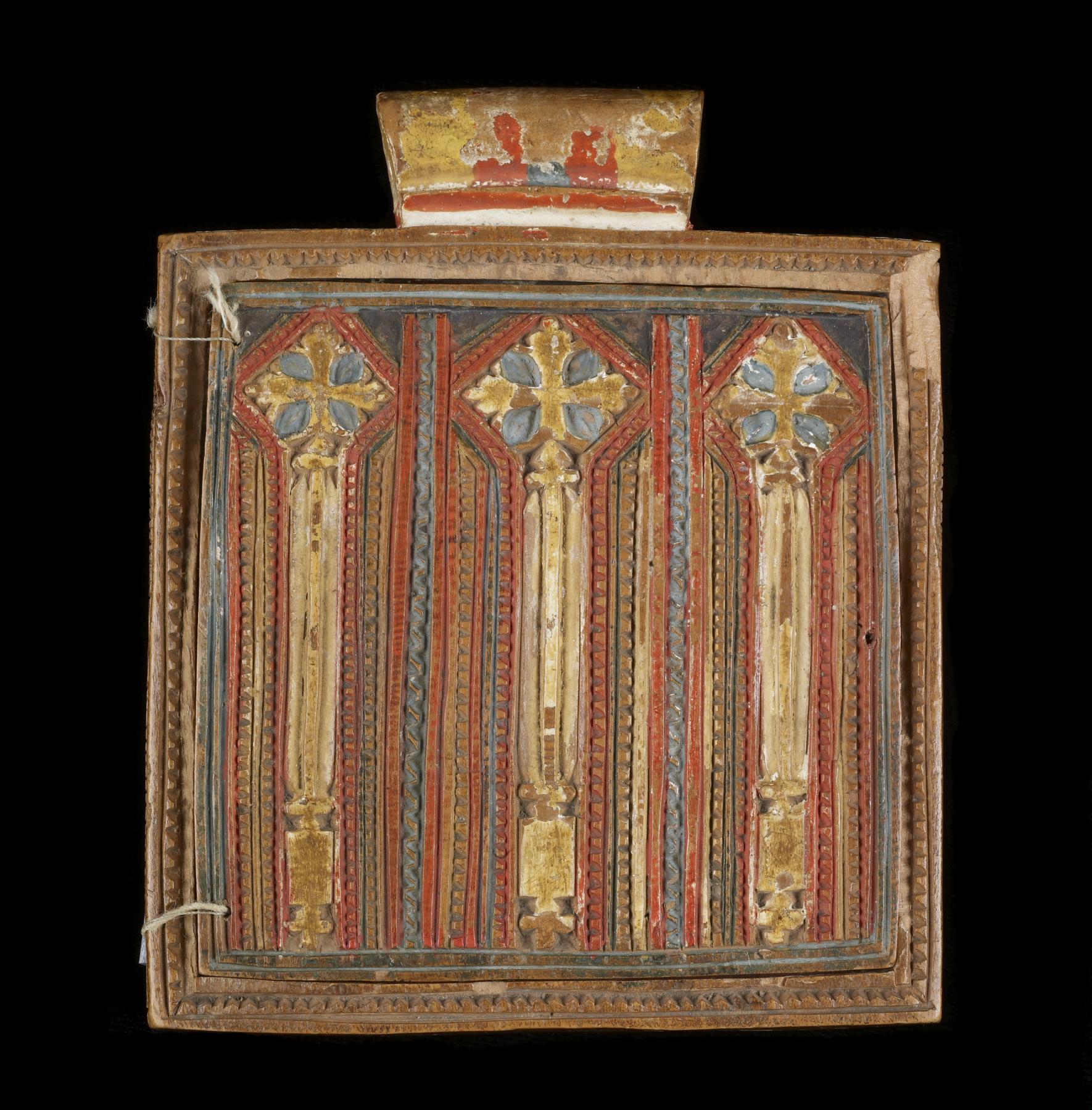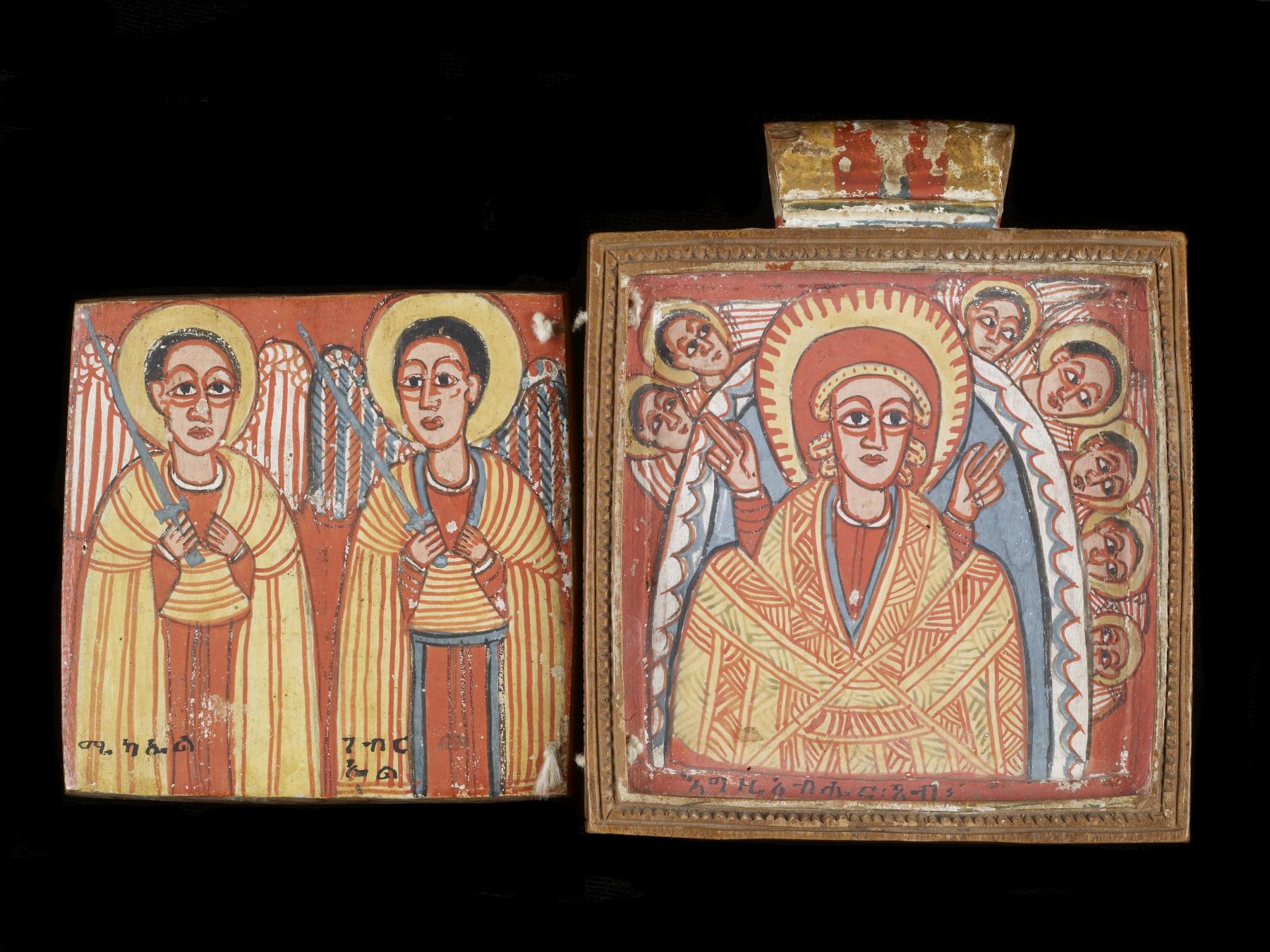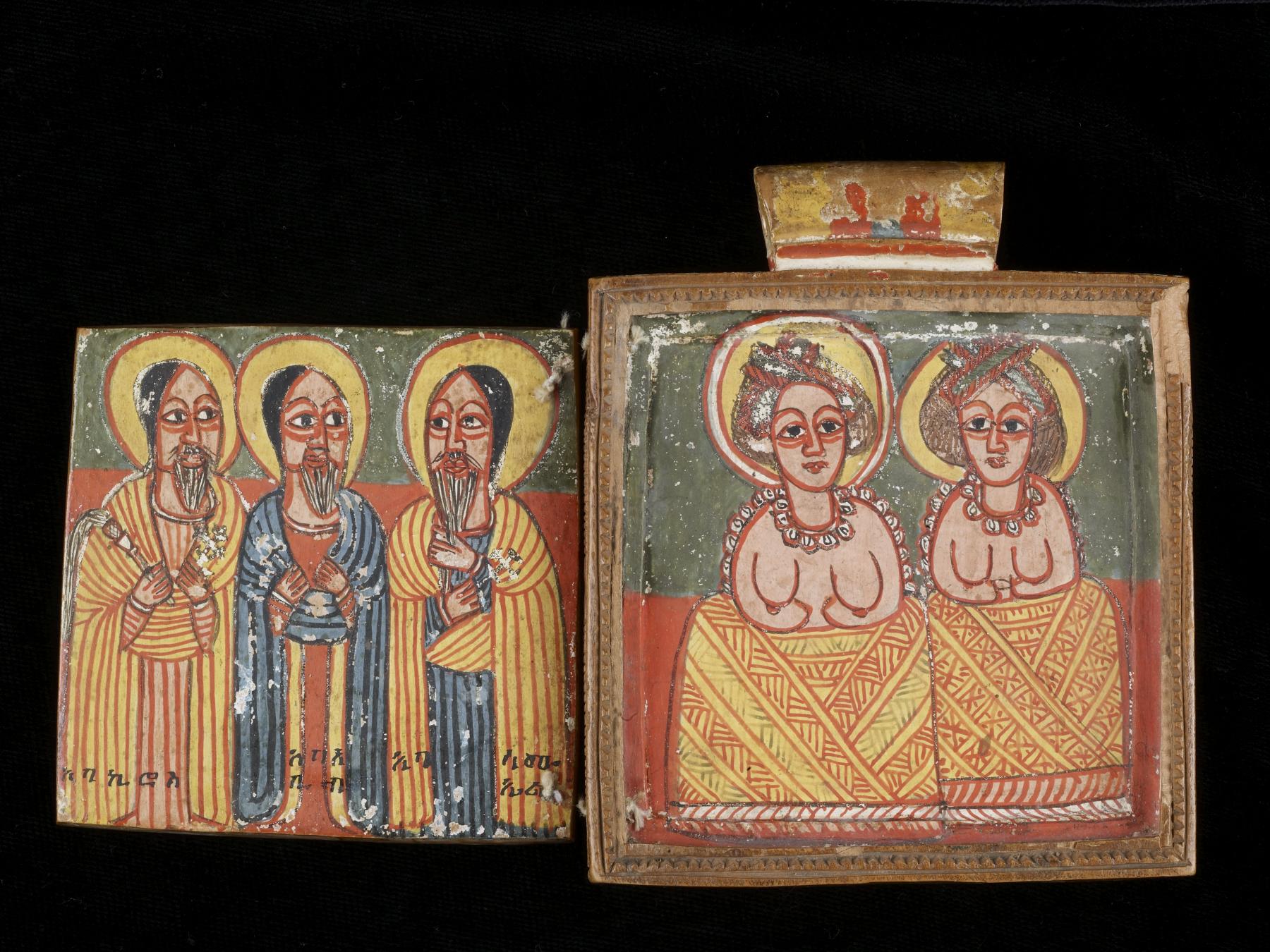Double-sided Diptych with Mary at Dabra Metmaq (Front); Saints (Back)
(Ethiopia)
The small scale of this painting and its protective covers facilitated its use as a portable icon. The hollow wooden cylinder attached to the body allowed the painting to be suspended from the owner's neck. The practice of wearing icons of the Virgin as pendants is documented in written sources as early as the fifteenth century. The main scene on this doubled-sided pendant commemorates the feast of Däbrä Metmaq. According to the "Miracles of Mary," this feast was instituted to celebrate an event that occurred annually in the church of Dayr al-Magtas, Egypt. For five days each spring, Mary miraculously appeared inside the cupola of the church, bathed in light and surrounded by angels. The main panel of this icon captures the visionary character of this event by enclosing the Virgin in a band of yellow light. Seraphim surround the outer border of red. The archangels Michael and Gabriel, depicted on the inside cover, evoke the heavenly hosts that accompanied the Virgin. By representing the major figures, the painter recreated the miraculous apparition in miniature for the pendant's owner. As the Festival of Däbrä Metmaq was especially important to women, and as the reverse of the pendant also bears the likenesses of two female martyr-saints, the patron of this work might have been female. The legend of the 15th-century saint Krestos Sämra describes how Christ bequeathed to her a painting, which he hung pendant-like around her neck. The delicately carved, painted covers transformed the closed pendant into a cherished object of personal devotion.
Provenance
Provenance (from the French provenir, 'to come from/forth') is the chronology of the ownership, custody, or location of a historical object.
Robert and Nancy Nooter Collection, Washington, D.C. [date and mode of acquisition unknown] [Nooter 20.11]; Walters Art Museum, 1996, by purchase.
Exhibitions
| 2006-2007 | Angels of Light: Ethiopian Art from the Walters Art Museum. Birmingham Museum of Art, Birmingham; Smith College Museum of Art, Northampton; Museum of Biblical Art, New York. |
| 2002-2005 | Realms of Faith: Medieval and Byzantine Art from the Walters Art Museum. Frist Center for the Visual Arts, Nashville. |
| 2001-2002 | Realms of Faith: Medieval and Byzantine Art from the Walters Art Museum. Frist Center for the Visual Arts, Nashville. |
| 1996 | Ethiopian Art at The Walters. The Walters Art Gallery, Baltimore. |
Geographies
Ethiopia, Gondar (Place of Origin)
Measurements
H open: 4 3/8 x W: 10 1/8 in. (11.11 x 25.7 cm); H closed: 4 3/8 x W: 3 5/8 in. (11.11 x 9.2 cm); Panel H: 3 3/16 x W: 3 1/4 in. (8.09 x 8.25 cm)
Credit Line
Museum purchase with funds provided by the W. Alton Jones Foundation Acquisition Fund, 1996
Location in Museum
Not on view
Accession Number
In libraries, galleries, museums, and archives, an accession number is a unique identifier assigned to each object in the collection.
In libraries, galleries, museums, and archives, an accession number is a unique identifier assigned to each object in the collection.
36.8

